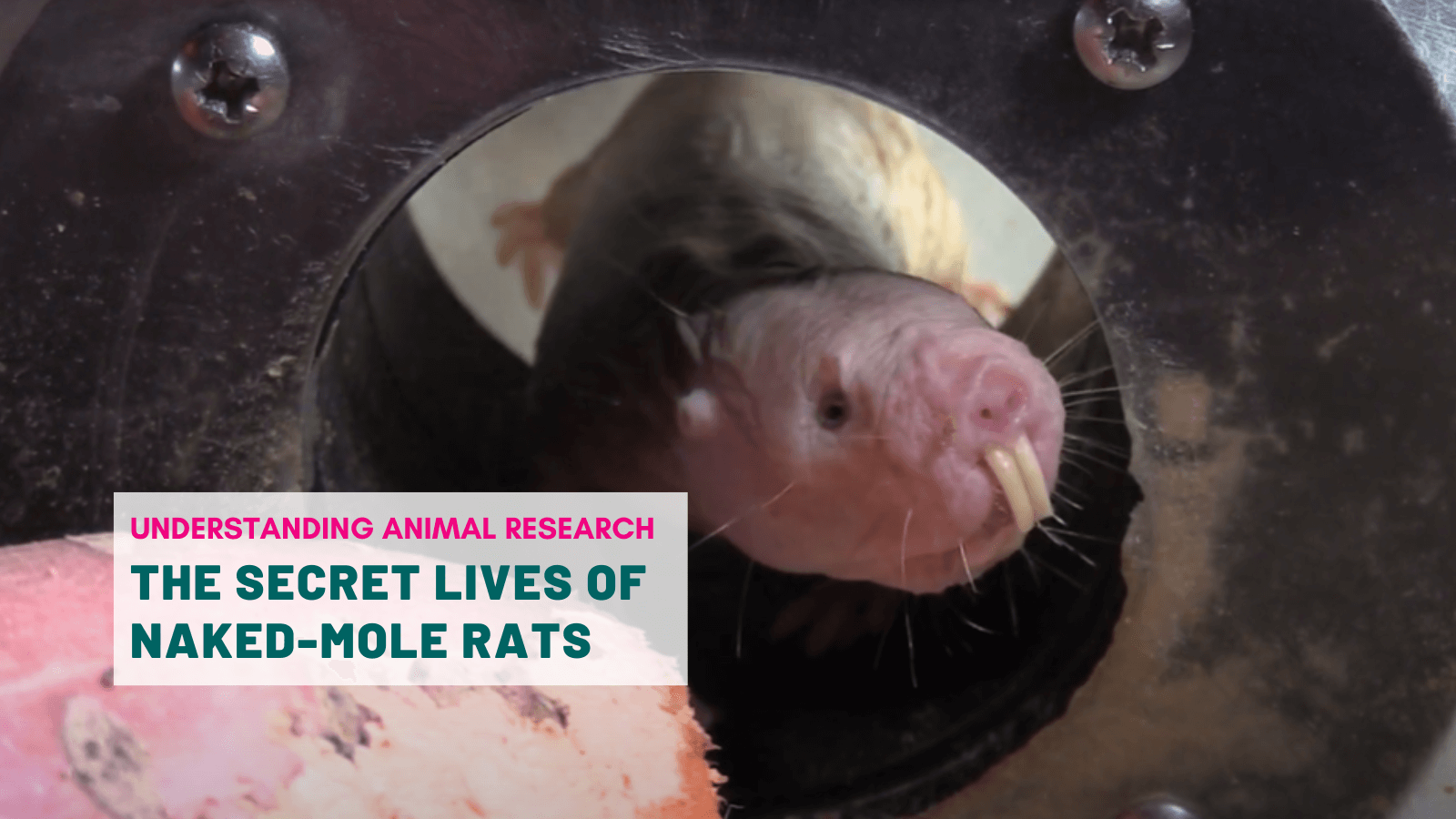
On average, when it comes to species, the larger you are, the longer you live. Based on that principle, naked mole rats should only live three to five years. But the oldest naked-mole rat known to man recently turned 37, and that is years, not months. And it’s not just that they can live a long time, they do so healthily. Researchers want to know why.
Naked-mole rats are resistant to a broad range of conditions that afflict humans, from neurodegeneration to cancer. They have evolved many unusual features, such as not feeling pain related to acids, a very neat trick when you live underground.
Deep in tunnels under the ground might seem like a safe environment, but it also means living in cramped spaces with lots of other animals where fresh air is scarce. Carbon dioxide tends to accumulate and it can react with water to produce carbonic acid. As bad as it sounds, naked-mole rats have evolved to live in contact with acid without feeling pain. About a decade ago, Dr Ewan St. John Smith and his team from the University of Cambridge identified a gene variation that means that in mole-rats acids actually switch nerves off and act as a local anaesthetic. The same gene was found in humans, but linked to extreme pain reactions, a discovery which led to investigations into drugs capable of targeting the gene and reducing pain.
So studying this hairless, unusual mammal may offer surprising clues about human biology.
“Looking into the weird biology of the naked mole rat helps us learn more about normal biology and ways to target certain conditions, be it pain, or cancer,” explains St. John Smith, the naked-mole rat expert and pain scientist at the University of Cambridge.
Naked-mole rats are one of the only animals on earth to be resistant to cancer. There are only a few, very rare, documented cases of cancer in mole rats. Figuring out the mechanisms behind this resistance, and whether there is the potential to translate to the treatment or prevention of cancer in humans, could be the next ground-breaking discovery in the field.
The problem is, the unusual biology of naked-mole rats is still little understood. Despite their quite amazing cancer-resistant characteristics, only one paper has ever been published on the naked-mole rat immune system, up to now. Compared to mice or rats, very few researchers are currently studying these fascinating animals and there is still a lot to discover. Why is it that, although their biology may hold wonders, these naked creatures have stayed largely hidden to research?
St. John Smith explains that working with these unique social animals requires special conditions and expertise and that usually means more money. Although lots of researchers might want to work with naked-mole rats, it is not always feasible because of the animal husbandry requirements. Even if you have the facilities and the space, the rodents need to be kept in warm, humidified environments, with a special system of interconnected cages with tunnels.
“These are very unusual animals,” St. John Smith tells UAR. “They are social, live in big colonies with a queen. They are cold blooded and need fresh food with supplements. You really need all this animal expertise before you can imagine working with them.”
A lot of effort goes into the welfare standards of the animals. When St. John Smith first applied for a project licence from the Home Office, a lot more questions were being asked from a welfare point of view. He explains:
“I think, at first, there was a lot of attention to make sure that the animal is being looked after. And if anything, the bar was even higher than for mice in terms of animal welfare, mostly because of the unusual nature of the request. Welfare standard for mice or rats in the lab are much more common and established.”
Working with naked-mole rats is also not as straightforward as working with mice. Say you want to create a new strain of mice. Their genetics are well known, creating a knockout is pretty straightforward and the reproductive rate of a mouse allows you to multiply your strain in a matter of weeks. It wouldn’t work like that for naked-mole rats. It can take a long time for a colony to settle, for the queen to establish herself, produce offspring and then look after them.
“These financial, logistical and scientific hurdles have meant that researchers have preferred collaborating with facilities that have naked mole rats rather than building their own colonies” adds St. John Smith.
Seven years ago, he set up the naked-mole rat initiative in Cambridge to try to bring together researchers from very different fields who wanted to study this animal but didn’t have the animal husbandry expertise.
Several years down the line, the initiative has grown from one to six colonies of mole rats digging on campus.
“I think that demonstrates our ability to look after the animals well,” argues St. John Smith. “It did require a bit of animal training of some animal technicians who did absolutely brilliantly. Our success is mostly down to two particular technicians who’ve worked really hard with the animals.”
St. John Smith concludes: “It is still a work in progress but there are more research groups working on the naked-mole rat than there were when I started working on them in 2006. However, it will stay a small research field just because of the intrinsic logistical issues.”
Follow Dr Ewan St. John Smith on Twitter @psalmotoxin
Last edited: 30 August 2023 14:57



